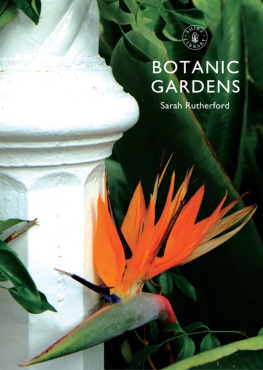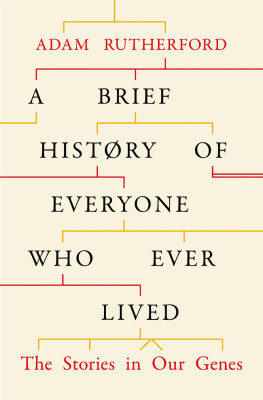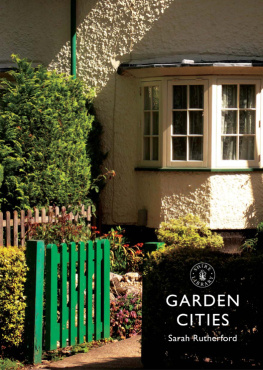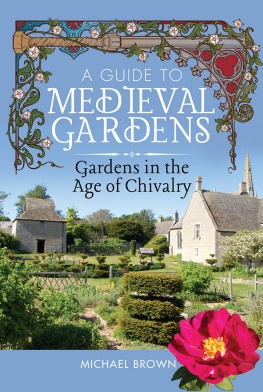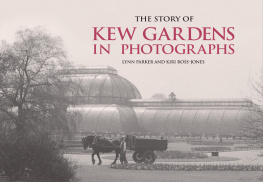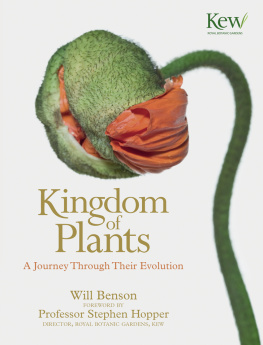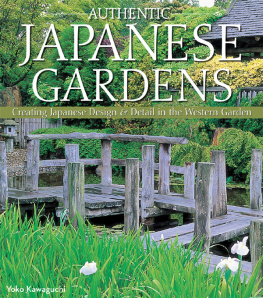
BOTANIC GARDENS
Sarah Rutherford

A tropical Tibouchina painted by Walter Fitch for Curtiss Botanical Magazine, 1868. A seminal publication by Kew Gardens, begun in 1787, Curtiss is the longest running botanical periodical featuring colour illustrations of plants.
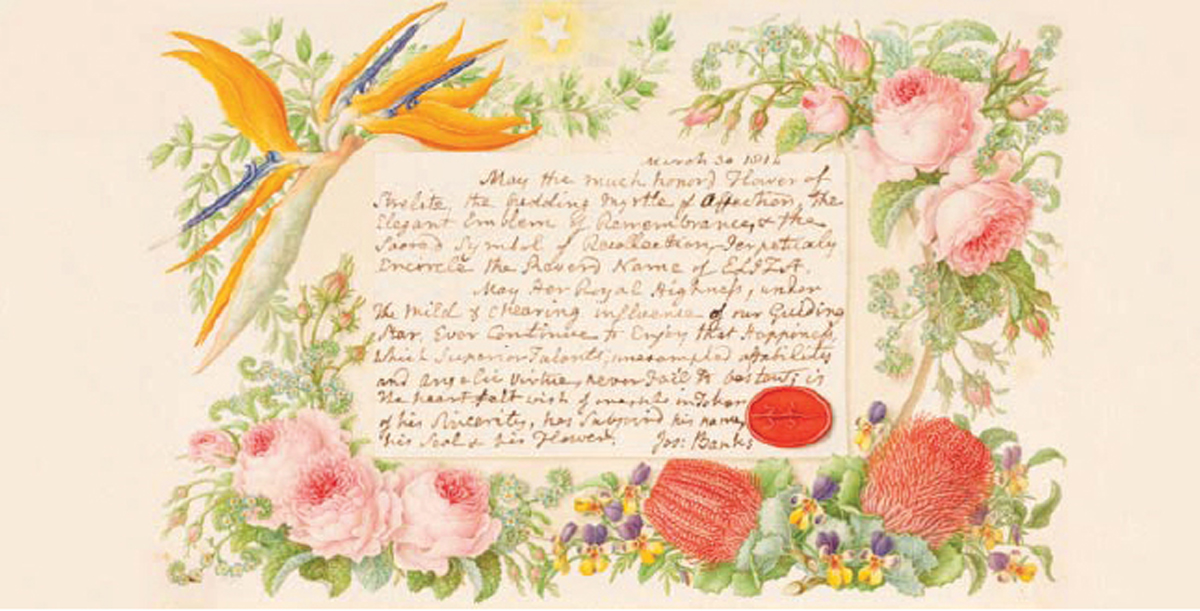
The botanist Joseph Bankss dedication to George IIIs daughter Princess Elizabeth (1814), exquisitely decorated by Bankss botanical illustrator Franz Bauer with symbolic and exotic flowers. His flower, the Banksia (bottom right), was his Australian introduction in 1788, along with the Bird-of-Paradise from South Africa in 1773. Banks was the early mastermind behind the Royal Botanic Gardens, Kew, London.
CONTENTS

The earliest botanic garden in Britain, Oxford, was founded in 1621. It is still used for plant research, education and conservation as well as being a beautiful garden.
INTRODUCTION: A LIVING LABORATORY
W ITHOUT PLANTS OUR world is nothing. Plants are essential to life. And so since prehistoric times mankind has gardened enthusiastically, and for many reasons. In particular since the flowering of the European Renaissance, the botanic garden has played a unique role, combining plant science with horticulture. It is not just a scientific institution for the study of botany in living and preserved plants, but has a parallel artistic and social purpose too. As a living laboratory it provides plant material for study and crucial refuge for endangered species via plants and seeds; it is also a charming ornamental garden that welcomes visitors and introduces them to myriad forms of the plant world. The scientific plant collection is organised for botanical research and education purposes and displayed with artistry and horticultural skill. This book describes the development and shifting purposes of botanic gardens, from their medical origins in the universities of Renaissance Italy to their current role worldwide as vibrant scientific, conservation and educational institutions, including Britains pivotal role in their history.
The botanic garden originated early in the Scientific Revolution (c. 15501700), in 1540s northern Italy, as an educational and medical institution, before spreading across Europe. By 1850, botanic gardens had spread worldwide, when many were used for disseminating and testing growing conditions for medicinal plants (e.g. cinchona for quinine) and crops (e.g. cotton, coffee, rubber), particularly in the colonial tropics. They displayed specialist and unusual collections and were laid out for visitors. By 1900 the Royal Botanic Gardens, Kew, had become the foremost of these botanic gardens worldwide and are now a World Heritage Site for their significant and uninterrupted contribution to the study of plant diversity and economic botany, as is their forerunner the 1540s Padua Horto Botanico in Italy. Over the last century the role of the botanic garden has shifted from the search for economic crops towards a dual emphasis on practical conservation and public education, while retaining its remit for botanical study.
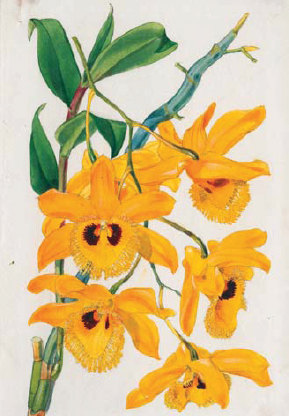
Botanic-garden botanists undertook long and arduous collecting trips. Joseph Hookers remarkable journey for Kew to India, 184850, discovered many tropical orchids of the Sikkim Himalaya. Dendrobium hookeriana (1873).
Today botanic gardens and arboreta form a thriving worldwide network, as vital repositories of biodiversity and botanical scholarship. Over three thousand are associated with the plant conservation charity Botanic Gardens Conservation International, which promotes their work in conservation and public education. Botanic gardens retain a crucial role in our future understanding of major environmental issues such as food security, ecological restoration and adaptation to climate change.
A typical botanic garden will have particular features to fulfill its scientific, ornamental, conservation and educational roles. The scientific facilities can include a herbarium, library and botanical laboratories as well as museums, seed banks, display and service glasshouses and other horticultural and ornamental buildings. These serve the botanists and receive plant material from collecting expeditions. A house for the superintendent or director is often provided, sometimes with other houses, lodges, visitor centre and refreshment buildings. Sculpture may also be a feature. The larger establishments run training schemes for gardeners including Kew, Edinburgh and Wisley in the United Kingdom, with educational facilities for their students. Most have educational programmes and facilities for schools and the general public.

Botanic gardens developed from medieval monastic and herbalists gardens. A storeroom aided preparation of the plants and contained storage jars for the materia medica (remedies).
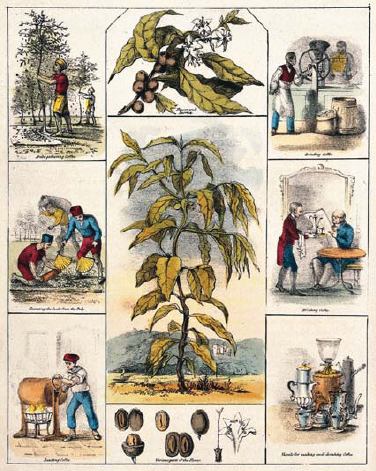
Botanic gardens helped to disseminate key crops throughout the tropics in the nineteenth century, including coffee.
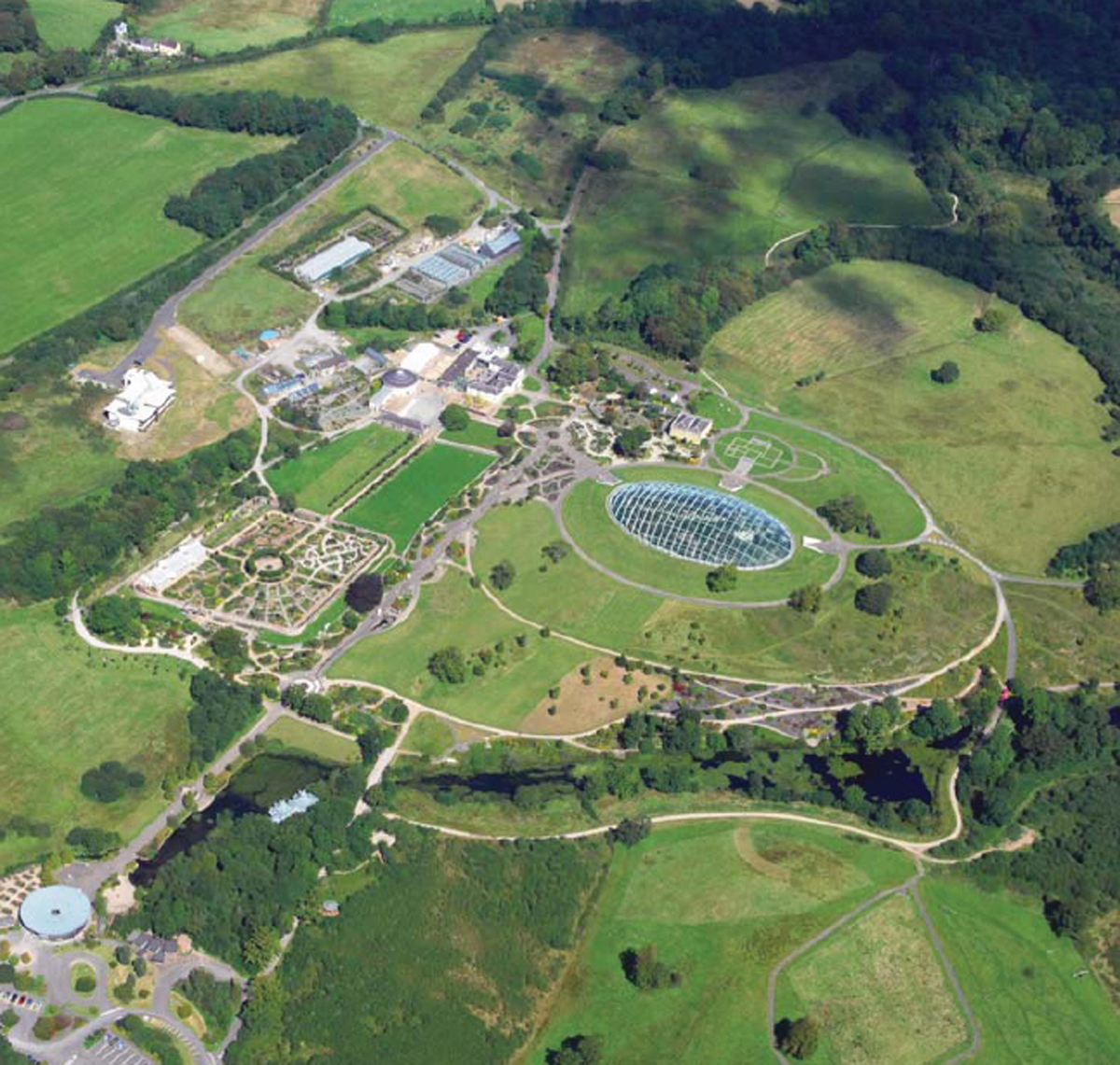
Botanic gardens remain relevant and form a vibrant network today. One of the most recent is the National Botanic Garden of Wales (2000).
THE FIRST BOTANIC GARDENS: PHYSIC GARDENS IN EUROPE
T HE FIRST TRUE botanic gardens were scientific university institutions set up in the 1540s, early in the European Renaissance, in the quest for experimental data. The earliest ones, known then as physic gardens, were founded in the northern Italian states by established universities at the heart of new ideas of scientific enquiry, to grow medicinal plants for identification and study by medical students. This scientific study of medicinal drugs and their sources, preparation, and use was known as the materia medica, when botany was merely ancillary to medicine.
The botanic garden has its origins in the tradition of the medieval monastic physic garden, which provided medicinal plants as the basis for remedies (also known as simples). The medicinal garden gradually shifted into the idea of a garden with a more rigorous scientific and educational purpose. In the mid-fifteenth century Pope Nicholas V had a famous garden in the Vatican, Rome, to promote the teaching of botany as a branch of medicine. This seems to have been the only one of its kind in Europe for a century and the distinction between this garden and later botanic gardens is a fine one. Possibly the idea of scientific collections of plants was suggested to Europeans by Montezumas extensive gardens of fragrant shrubs, flowers and medicinal plants, which astonished the Spanish Conquistadores in Aztec Mexico. Whatever the influences, Italian botanic gardens heralded the ferment of ideas that drove the extraordinary advancement of science that still influences us today, quickly moving beyond mere medical education in an attempt to understand and explain man and the natural world.
Next page
